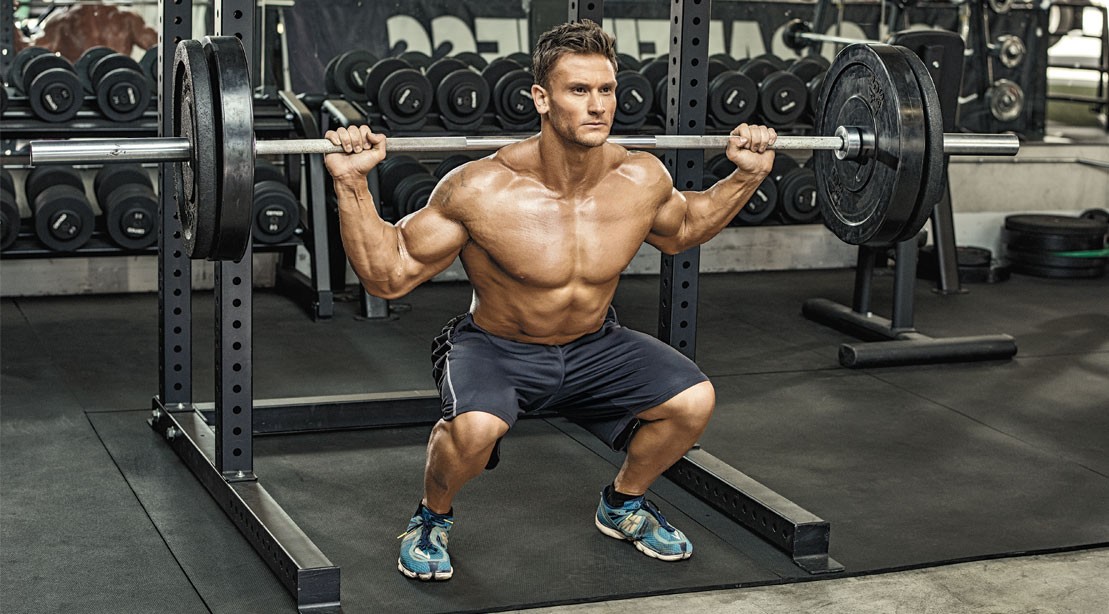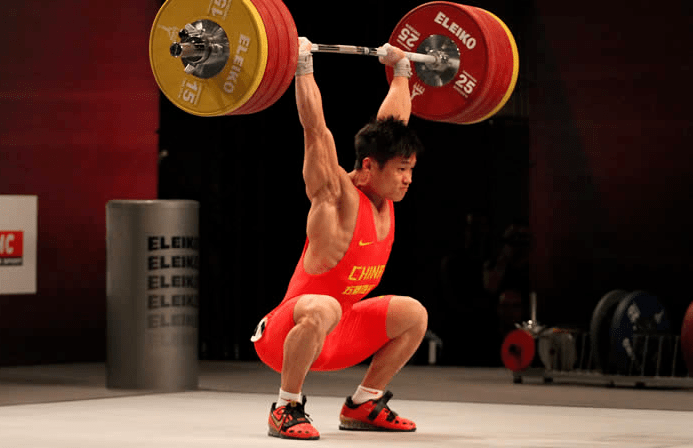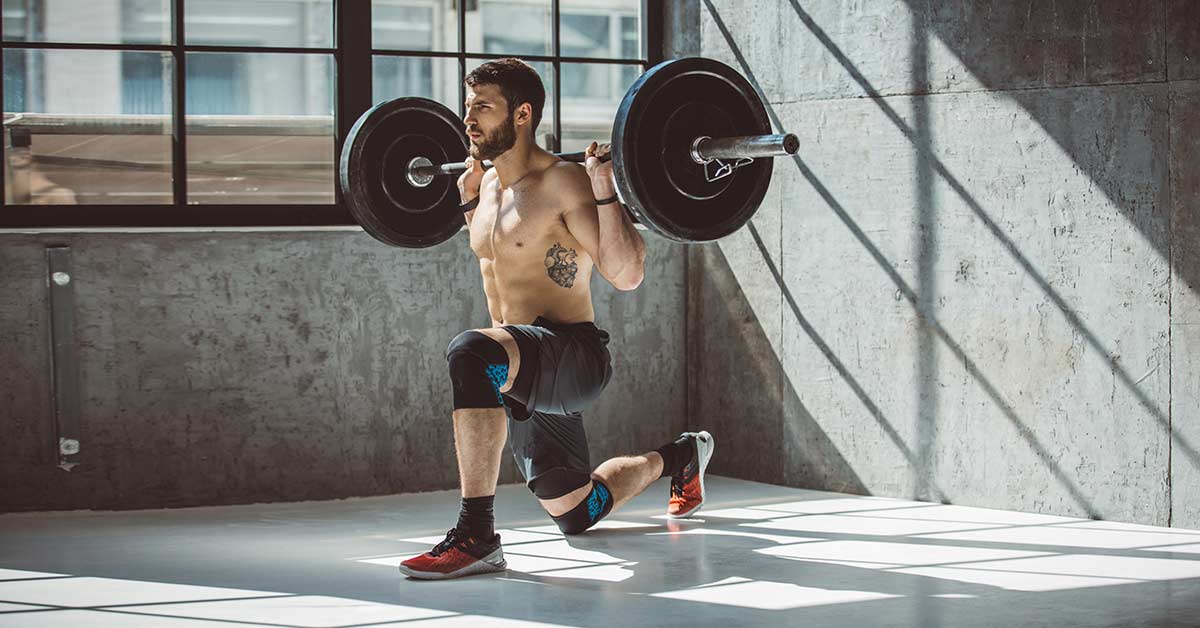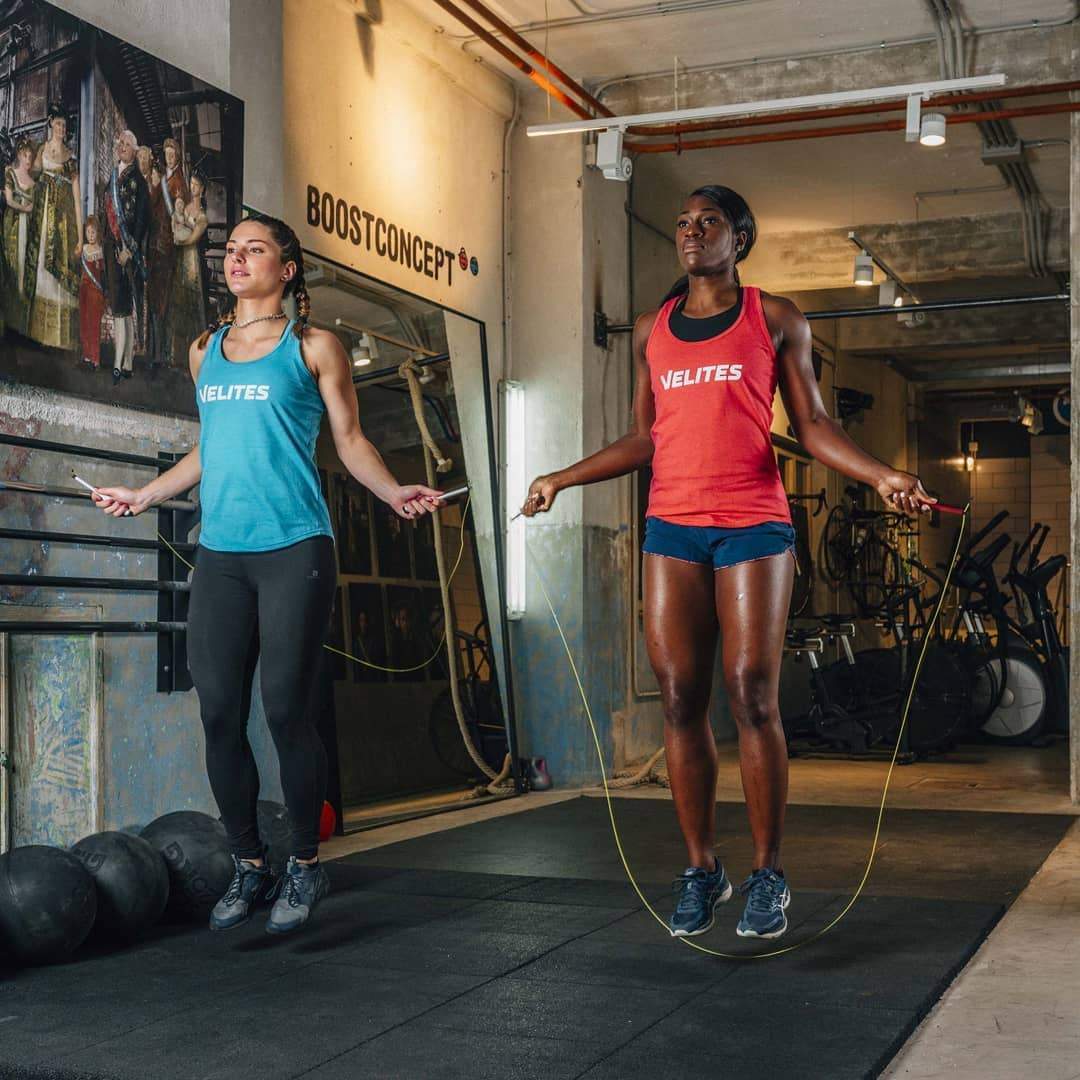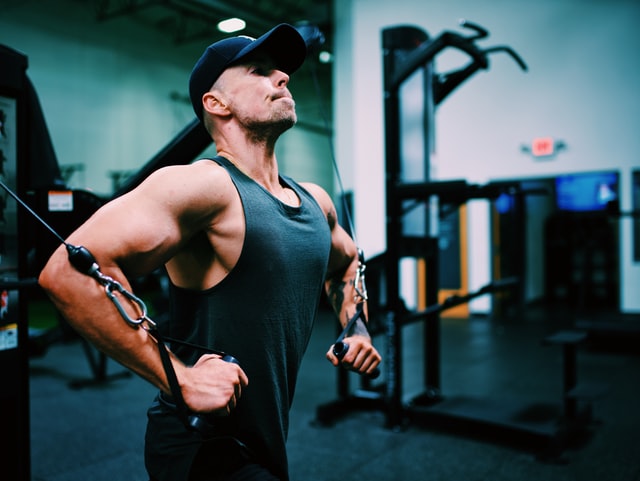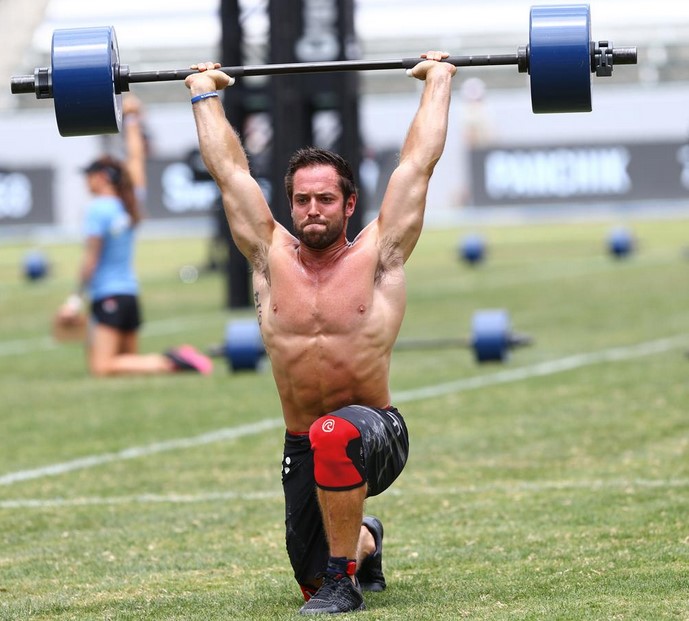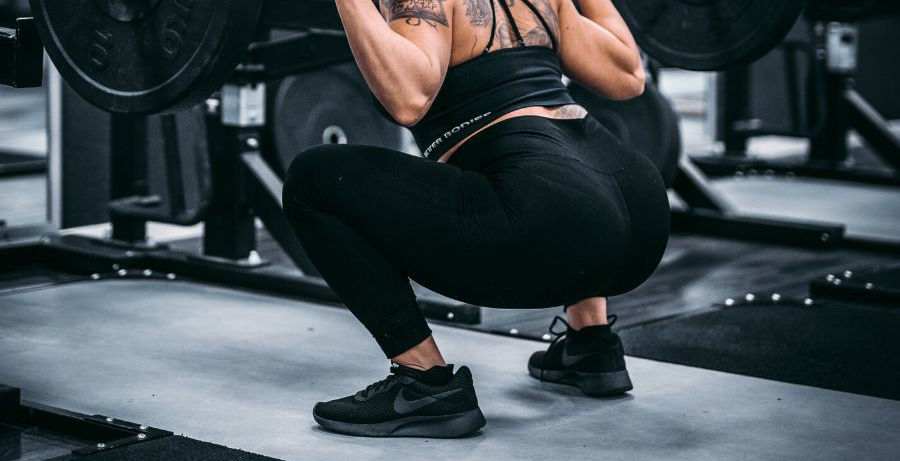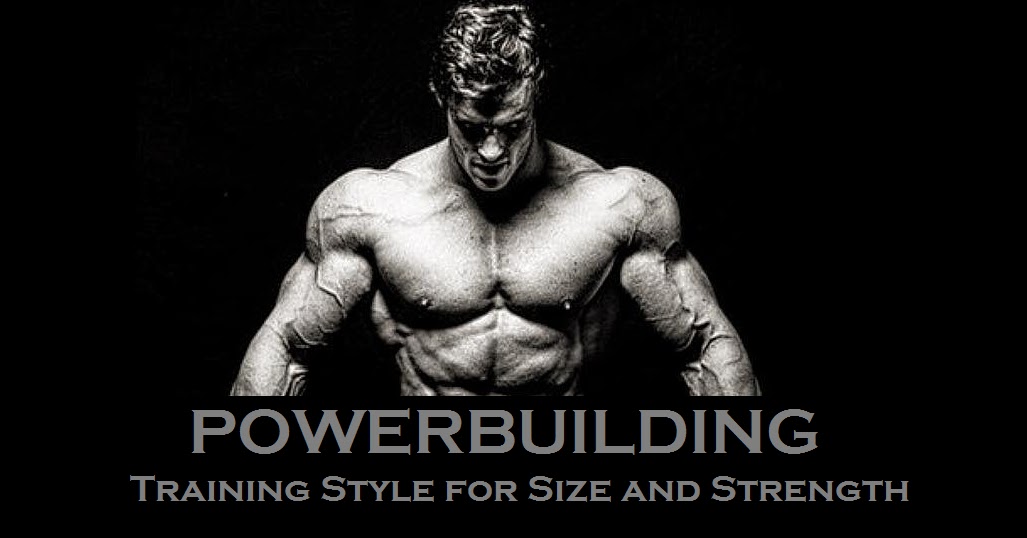Benefits of the Standing Military Press and why it is not a competitive lift.
If you don’t already know Fitenium is a free, mobile, video-based social network for athletes who train strength or bodyweight exercises. At Fitenium users can follow their performance, compete and get discounts in nutrition and sports equipment stores. Download it here.
The Military Press is an exercise in which to test your torso strength, it is considered a compound exercise in which you will test the strength of your shoulders, but the benefits of the military press also include the core strengthening, improvement in mobility and transfer to other lifts and to your daily life. This is why to gain strength almost all athletes should incorporate some type of Military Press into their training routine, as this is one of the best shoulder exercises.
Implicated musculature
The Military Press, also known as the Shoulder Press or Olympic Press, primarily engages our shoulders (middle and outer deltoids), but also engages our Triceps, Pectorals, Trapezius, Scapular Stabilizers, and Core. It is done by extending the arms vertically from the starting position at shoulder height, placing the bar on the pectoral clavicular bundle.
Barbell or Dumbbells?
Both alternatives will offer us the benefits of the Military Press, and we do not consider that it is necessary to choose between one version and the other. The military press with dumbbells is an exercise for unilateral work, correcting asymmetries and may be more comfortable for some people, perhaps if you train looking for aesthetics you would give this version more priority. However, the Barbell Military Press allows strength athletes to move more kilograms which will translate into greater strength gains.
Benefits of the Military Press
– Strength and hypertrophy of the shoulders: whether you train for strength or for aesthetics, the military press is the foundation for building strong and hypertrophied shoulders and should be the foundation of your shoulder training or vertical push. Any variant will have positive effects on the recruitment of the above mentioned musculature as mentioned in this study.
– Overhead exercise performance: When it comes to executing other more technical exercises such as the Jerk or handstand variants (Pine Push-ups, Handstand Walk…), strong shoulders as a result of the benefits of the Military Press are the basis for doing them safely. more complex exercises.
– Shoulder health: the “resilience” of our shoulders plays a significant role in avoiding injuries. The Military Press will help you build stronger shoulders and resilient joints.
– Transfer to our daily life: Regardless of whether you are a Powerlifter or simply like to be in shape, all of us will benefit in our daily lives from having a good torso musculature thanks to the Military Press, either when carrying groceries or if we develop postural problems for long days seated work

– An iron “core”: it is known that when we raise the dumbbells or the bar doing Military Press we require our stabilizing muscles of the abdomen, in particular our rectus abdominis, external oblique and spinal erector. This is especially true of the standing Military Press compared to the seated version.
– Improvement of the Bench Press: among the benefits of the Military Press is its transfer to the Bench Press. It can be said that having a strong Military Press implies a strong Bench Press, since both lifts recruit similar muscles. In fact, there is one study that suggests that the dumbbell Military Press can be predicted reasonably well from the bench press 6RM measurement.
Cons of the Military Press
– Injurious potential: the more mobile a joint is, the more possibilities of injuring it we have. That is why the shoulder is a joint that is somewhat easy to injure. However, as in almost any exercise, with correct technique, the Military Press is not going to be particularly harmful. The biggest problem can come from not controlling the weight and the joint giving out, so control the weights and you won’t have too much of a problem.
In conclusion, due to the benefits of the Military Press, we recommend including it in your routine, but be careful with the weights you move because failing in the Military Press is more dangerous than in other exercises.
Why is Military Press not part of any competitive discipline?
In this article we have talked about the benefits of Military Press, however it may be curious that Military Press is not done in any discipline. Behind this situation there is a rather interesting story that is worth telling.
Although today when we are asked about upper body strength we almost always think of the Bench Press, for most of the 20th century the answer would have been the Military Press. That is why the 1928 Amsterdam Olympic Games included the Clean and Press together with the Snatch and the Clean and Jerk within the so-called “Olympic Lifting”.
While the Snatch and the Clean and Jerk were exercises called “fast”, considered as exercises that tested the athlete’s speed and agility, the Clean and Press was seen as the true measure of the athlete’s strength, since the push was performed in a controlled way.
However, problems were not long in coming. While the idea was for weightlifters to do this strict exercise, i.e. with their backs straight, heels together, and their heads facing forward, this proved highly impractical, as it allowed various ways of “cheating” the movement to achieve participation. of larger muscle groups such as the legs and hips.
This meant that decades later, already in the middle of the Cold War, the desire for victory and competitiveness between political blocs led Soviet athletes to develop a series of techniques in which they arched their backs in an exaggerated way to commit as much as possible to the athlete. pectoral and manage to move a greater amount of kiloage. Although it is said that it was the Soviet athletes who started this trend, it would be unfair to ignore that the athletes of the capitalist bloc (American, French, German…) imitated this technique as soon as they learned it, degenerating the Military Press into a pseudo Press. of Chest.
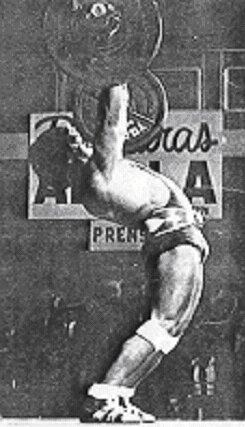
This lousy technique led to breaking records with absolute ease abusing it and going from a Press of 122 kilos in the 1928 Olympics to bordering on 200 in just a few decades. It was clear that the strict form of the Military Press was more laughable than anything else.
The Olympic Committee decided to give in to this trend and at the 1956 Melbourne Olympics allowed a slight bend in the back if it was not excessive. The vagueness of the rule did not fix anything and athletes of all nationalities did the Military Press with the help of swaying and with their backs arched as much as possible.
As a curiosity, this was the last winner of Clean and Press in the heavy category, nothing more and nothing less than the mythical Vasily Alekseyev moving 500 pounds in the Clean and Press in 1972, as the Olympic Committee decided to eliminate the Clean and Press from the Olympic lifts starting in 1976.
His departure from Olympic lifting caused his popularity to drop precipitously, even among bodybuilders, with dumbbells and even the injurious Overhead Press widely used by Steve Reeves becoming more popular. Arnold however built his shoulders on the Dumbbell Press. On the other hand, at the end of the 60s, Powerlifting displaced the Military Press as the torso exercise par excellence, replacing it with the Bench Press. Many people called the Military Press “the forgotten lift” until the 2010s.
Fortunately, from that decade, programs like Starting Strength, in which the athletes work a series of basic exercises within which is the Military Press and the explosion of the Crossfit, where the Military Press is also widely used, have helped revive old laurels of our favorite Vertical Press. Of course it’s not nearly as popular as it was in the 1920s or 1930s, but we can safely say that it hasn’t been forgotten.
Of course it’s not nearly as popular as it was in the 1920s or 1930s, but we can safely say that it hasn’t been forgotten.
Greetings and see you in Fitenium!
Would you like to receive more content like this?
Subscribe.

